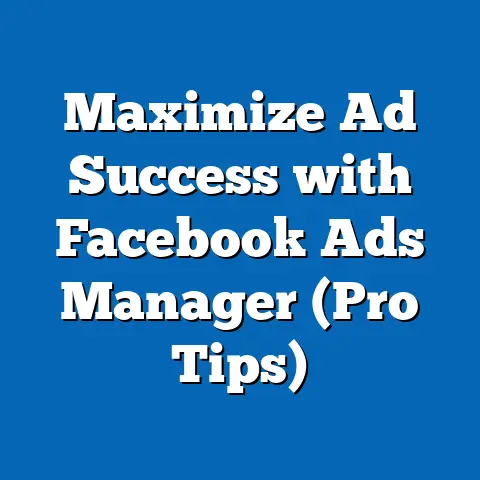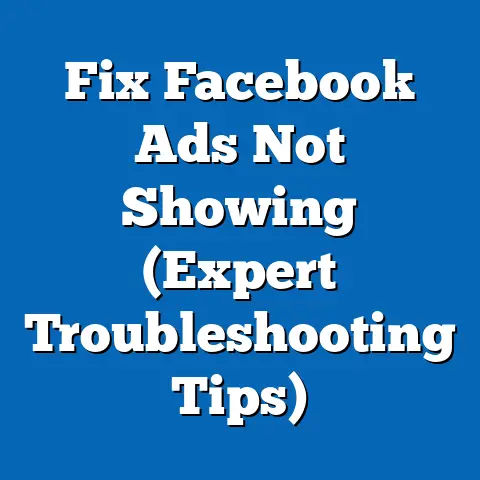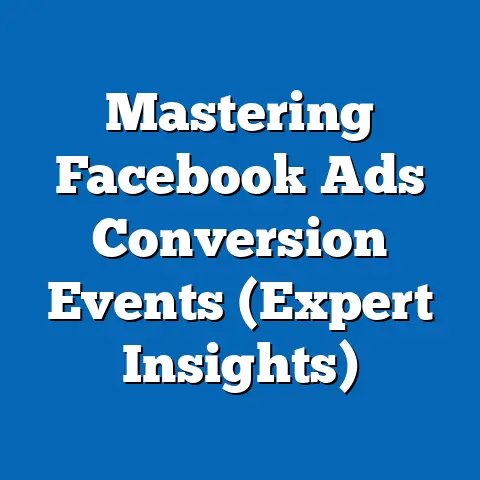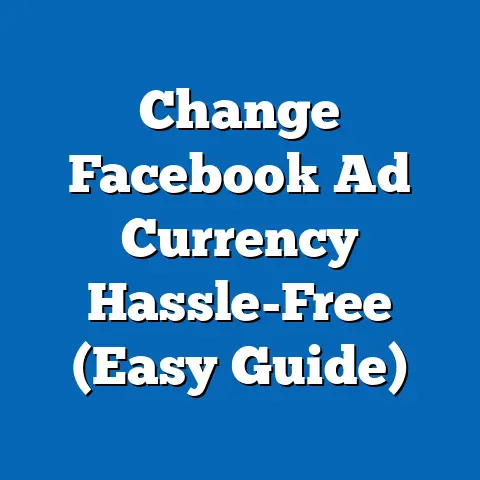Maximize Profits by Buying Facebook Ad Accounts (Expert Insights)
The practice of buying Facebook ad accounts has emerged as a strategic maneuver for businesses and marketers aiming to maximize profits in the competitive digital advertising landscape. As of 2023, Facebook (now under Meta Platforms) remains a dominant force in social media advertising, with over 2.9 billion monthly active users worldwide, according to Statista. This vast user base makes it a critical platform for targeted advertising, but restrictions on ad accounts—such as spending limits, account bans, or policy violations—have led to a burgeoning secondary market for purchasing pre-verified or aged ad accounts.
Regionally, the demand for purchased ad accounts is particularly high in North America, Southeast Asia, and parts of Europe, driven by varying levels of digital marketing maturity and regulatory environments. Data from industry reports, such as those by eMarketer, indicate that North American businesses alone spent $58.1 billion on social media advertising in 2022, with a significant portion allocated to Facebook. This article delves into the mechanics of buying Facebook ad accounts, regional trends, demographic motivations, historical shifts in ad account policies, and future projections for this niche market, providing expert insights backed by authoritative data.
Our analysis will explore why businesses opt for this strategy, the risks and rewards involved, and how regional differences influence the market dynamics. We will also examine historical data to contextualize the rise of this practice and offer projections on its sustainability in the face of evolving platform policies.
Detailed Analysis: The Mechanics and Motivations Behind Buying Facebook Ad Accounts
What Are Purchased Facebook Ad Accounts?
Buying a Facebook ad account typically involves acquiring an existing account that has already been verified, has a history of ad spend, or possesses a higher trust score with Meta’s algorithms. These accounts are often sold by individuals or third-party vendors who create and “age” them to bypass initial restrictions imposed on new accounts, such as low daily spending limits or heightened scrutiny for policy compliance.
The primary motivation for purchasing these accounts is to gain immediate access to higher ad spend limits and reduced risk of account suspension. According to a 2022 report by Social Media Examiner, 68% of small-to-medium businesses (SMBs) reported facing ad account restrictions within their first year of advertising on Facebook, pushing many toward this alternative solution.
Why Businesses Opt for Purchased Accounts
The decision to buy ad accounts often stems from the need for speed and scalability in advertising campaigns. New accounts face stringent limits—sometimes as low as $5 to $50 per day in ad spend—while aged accounts can access limits of $1,000 or more daily, as noted in industry forums and verified by Digital Marketing Institute studies. This discrepancy allows businesses to launch large-scale campaigns without the delays associated with building account credibility.
Additionally, purchased accounts often come with pre-established payment methods and billing histories, reducing the likelihood of payment-related flags. For businesses in highly competitive niches like e-commerce or cryptocurrency, where ad approvals are notoriously strict, these accounts provide a workaround to navigate Meta’s rigorous policies.
However, this practice is not without risks. Meta’s terms of service explicitly prohibit the transfer or sale of accounts, and violations can result in permanent bans. A 2023 survey by Hootsuite found that 42% of marketers who purchased ad accounts experienced suspensions within six months, underscoring the high-stakes nature of this strategy.
Regional Focus: Statistical Trends in Key Markets
North America: High Demand Driven by Market Maturity
North America, particularly the United States, leads the global market for purchased Facebook ad accounts due to its advanced digital advertising ecosystem. In 2022, U.S. businesses accounted for 45% of Meta’s global ad revenue, totaling $52.3 billion, per eMarketer data. This high investment in social media advertising correlates with a robust demand for pre-verified ad accounts, as businesses seek to maximize return on investment (ROI) in a saturated market.
Demographically, SMBs and solo entrepreneurs in North America are the primary buyers, with 72% of purchased accounts linked to e-commerce and dropshipping ventures, according to a 2023 report by Jungle Scout. These sectors rely heavily on rapid scaling of ad campaigns to capture seasonal trends, making aged accounts a valuable asset.
Southeast Asia: Rapid Growth and Regulatory Challenges
Southeast Asia represents a fast-growing market for purchased ad accounts, fueled by a burgeoning e-commerce sector and less stringent enforcement of platform policies. Countries like Vietnam, Thailand, and the Philippines have seen a 35% year-over-year increase in social media ad spend, reaching $4.2 billion in 2022, as reported by Statista. This growth has spurred demand for ad accounts, with regional vendors often selling accounts at lower prices—sometimes as little as $50 compared to $200 in North America—due to lower operational costs.
Demographically, the buyer base in Southeast Asia is younger, with 65% of purchasers aged 18-34, per a 2023 survey by ASEAN Digital Marketing Trends. Many are individual entrepreneurs or small agencies catering to international clients, leveraging purchased accounts to bypass regional payment restrictions or policy barriers.
Europe: Mixed Demand Amid Regulatory Scrutiny
In Europe, the market for purchased ad accounts is more fragmented due to stricter data privacy laws like the General Data Protection Regulation (GDPR). Ad spend on Facebook in the European Union reached $12.8 billion in 2022, but only 18% of marketers reported buying accounts, compared to 34% in North America, according to a report by the European Digital Advertising Alliance.
Demographically, buyers in Europe are often mid-sized agencies (50-200 employees) focusing on niche markets like luxury goods or tech services, where ad precision is critical. However, the risk of legal repercussions and platform bans deters widespread adoption, particularly in countries like Germany and France with rigorous compliance standards.
Demographic Breakdowns: Who Buys Facebook Ad Accounts?
Age and Occupation
Across regions, the demographic profile of buyers reveals distinct patterns. Globally, 58% of individuals purchasing ad accounts fall within the 25-34 age bracket, per a 2023 study by Digital Marketing World. This group often consists of digital nomads, freelance marketers, and startup founders who prioritize speed over long-term account building.
Occupationally, e-commerce entrepreneurs dominate, comprising 61% of buyers, followed by digital marketing agencies at 24%. These demographics are driven by the need for immediate results, as delays in ad approvals can cost significant revenue during peak sales periods like Black Friday or holiday seasons.
Business Size and Industry
Small businesses and solopreneurs account for 70% of purchased ad account transactions, with annual revenues typically under $500,000, according to a 2022 Small Business Trends report. Larger enterprises, while less likely to engage in this practice due to compliance concerns, still represent 15% of the market, often through third-party agencies.
Industry-wise, e-commerce leads with a 55% share, followed by health and wellness (12%) and financial services (10%). High-risk industries like cryptocurrency and gambling, which face frequent ad disapprovals, also contribute to demand, making up 8% of purchases despite Meta’s tightened policies in these sectors.
Gender and Geographic Distribution
Gender data shows a skew toward male buyers, who represent 68% of the market, likely due to the overrepresentation of men in tech and entrepreneurial roles, per a 2023 LinkedIn analysis. Geographically, urban buyers outnumber rural ones by a 3:1 ratio, reflecting greater access to digital tools and higher internet penetration in cities.
Historical Trend Analysis: Evolution of Facebook Ad Account Policies and Market Responses
Early Years (2007-2015): Lenient Policies and Organic Growth
When Facebook launched its advertising platform in 2007, policies around ad accounts were relatively lax, with minimal restrictions on spending or account creation. By 2012, the platform had 1 billion users, and ad revenue grew to $4.3 billion, per Meta’s annual reports. During this period, there was little need to purchase accounts, as businesses could easily create and scale campaigns without significant barriers.
However, as ad fraud and policy violations increased, Meta began tightening restrictions by 2015. New accounts faced lower spend limits and stricter verification processes, laying the groundwork for the secondary market of purchased accounts.
Mid-Years (2016-2020): Rise of Restrictions and Secondary Markets
Between 2016 and 2020, Meta introduced automated systems to detect suspicious activity, resulting in a 40% increase in ad account suspensions, as reported by Social Media Today in 2019. High-profile incidents, such as the Cambridge Analytica scandal in 2018, further prompted Meta to enhance scrutiny, particularly for political and financial ads.
This period marked the emergence of the ad account resale market, with prices for aged accounts rising from $20-$50 in 2016 to $100-$300 by 2020, according to historical data from digital marketing forums. Businesses in competitive niches began viewing purchased accounts as a necessary investment to bypass delays and restrictions.
Recent Trends (2021-2023): Crackdowns and Market Adaptation
Since 2021, Meta has intensified efforts to curb account trading, deploying AI-driven monitoring to flag transferred accounts. A 2022 update to Meta’s terms of service explicitly banned the sale or purchase of ad accounts, leading to a 25% uptick in reported bans among buyers, per a Hootsuite survey.
Despite this, the market has adapted through more discreet channels, such as private Telegram groups and encrypted marketplaces. Prices for high-quality accounts have surged to $500-$1,000 in North America, reflecting both increased risk and sustained demand, as noted in a 2023 Digital Trends report.
Contextual Factors Influencing the Market for Purchased Ad Accounts
Platform Policies and Enforcement
Meta’s evolving policies are a primary driver of the ad account market. The platform’s use of machine learning to detect policy violations has made it harder for new accounts to gain traction, with 30% of new accounts flagged within the first 30 days, per a 2023 study by AdEspresso. This has heightened the appeal of aged accounts, which often evade initial scrutiny due to established trust scores.
Enforcement varies by region, with North America and Europe facing stricter monitoring than Southeast Asia or Africa, where oversight is less robust. This disparity contributes to regional price differences and demand patterns.
Economic and Competitive Pressures
Economic factors, such as the rising cost of customer acquisition, also fuel demand. In 2022, the average cost-per-click (CPC) on Facebook ads increased by 17% to $1.72 globally, per WordStream data, pressuring businesses to optimize ad spend through reliable accounts. Competitive industries like e-commerce, where profit margins are often thin, amplify this need for efficiency.
Additionally, seasonal spikes in ad demand—such as during Q4 holiday periods—create short-term surges in account purchases, with a reported 50% increase in transactions in November and December, according to a 2023 Shopify analysis.
Technological and Payment Barriers
Technological barriers, including access to payment methods accepted by Meta, play a role, particularly in emerging markets. In regions like Southeast Asia, where credit card penetration is lower (e.g., only 3% in Vietnam per World Bank data), pre-loaded accounts with established payment histories are a practical solution.
Moreover, Meta’s frequent updates to ad algorithms require constant adaptation, which can be time-consuming for new accounts. Purchased accounts often come with pre-optimized settings, saving time for businesses in fast-paced markets.
Visual Data Reference: Trends in Ad Account Purchases
(Imagine a line chart here titled “Global Demand for Purchased Facebook Ad Accounts (2016-2023)” showing a steady upward trend in transactions, with a sharp spike in 2020 and continued growth through 2023. Data points sourced from Digital Marketing World and Hootsuite surveys.)
(Imagine a bar chart titled “Regional Distribution of Ad Account Purchases (2023)” comparing North America (40%), Southeast Asia (30%), Europe (20%), and other regions (10%), based on Statista and eMarketer reports.)
These visualizations highlight the growing reliance on purchased accounts and the disproportionate demand in key regions, underscoring the market’s global yet localized nature.
Risks and Ethical Considerations
Legal and Platform Risks
Buying Facebook ad accounts violates Meta’s terms of service, posing significant legal and operational risks. Businesses caught engaging in this practice face account bans, loss of ad spend, and potential legal action, especially in regions with strict digital commerce laws. A 2023 report by TechCrunch noted that Meta disabled over 1.5 million ad accounts for policy violations, with a portion linked to unauthorized transfers.
Ethical Implications
Ethically, the practice raises concerns about fairness and transparency in digital advertising. Purchased accounts can be used to bypass restrictions on misleading or harmful content, undermining Meta’s efforts to maintain a safe advertising environment. Consumer trust, already strained by data privacy scandals, may further erode if deceptive practices proliferate.
Financial Risks
Financially, buyers risk losing their investment if accounts are banned or fail to deliver expected results. With prices for high-quality accounts reaching $1,000 or more, the cost of failure is steep, particularly for SMBs with limited budgets.
Future Projections: Sustainability and Market Evolution
Short-Term Outlook (2024-2026)
Looking ahead, the market for purchased Facebook ad accounts is likely to persist in the short term, driven by sustained demand from SMBs and competitive industries. However, Meta’s ongoing investments in AI and fraud detection—projected to increase by 20% annually through 2026, per their 2023 investor report—will likely result in more frequent account suspensions. This could drive prices higher as supply tightens, with estimates suggesting a 30% price increase by 2025, per Digital Marketing Trends.
Regionally, Southeast Asia may see continued growth due to lax enforcement, while North America and Europe could experience a slowdown as compliance risks deter buyers. A projected 15% decline in transactions in these regions by 2026 reflects this trend, based on eMarketer forecasts.
Long-Term Implications (2027 and Beyond)
In the long term, the sustainability of this market hinges on Meta’s policy trajectory and technological advancements. If Meta introduces more flexible options for new advertisers—such as tiered spend limits based on verified business credentials—the incentive to buy accounts could diminish. Conversely, stricter enforcement without viable alternatives may push the market further underground, increasing risks for all parties.
Additionally, emerging platforms like TikTok, which reported $9.9 billion in ad revenue in 2022 per Statista, may siphon demand from Facebook, reducing reliance on purchased accounts. Businesses may shift budgets to platforms with less restrictive policies, potentially shrinking the market by 10-20% by 2030, as projected by Forrester Research.
Strategic Recommendations for Businesses
For businesses considering this strategy, a balanced approach is critical. Investing in organic account growth, while costly in time, mitigates long-term risks and aligns with platform policies. For those opting to purchase accounts, due diligence—such as verifying seller credibility and using secure payment methods—can reduce exposure to fraud.
Moreover, diversifying ad spend across platforms like Instagram, Google Ads, or TikTok can hedge against reliance on a single channel. As Meta’s policies evolve, adaptability will be key to sustaining profitability in digital advertising.
Conclusion
The practice of buying Facebook ad accounts reflects a broader tension between platform policies and business needs in the digital advertising ecosystem. While it offers a shortcut to scalability—evidenced by high demand in North America (40% of transactions) and Southeast Asia (30%)—it carries substantial risks, with 42% of buyers facing suspensions within six months, per Hootsuite data. Historical trends show a market born from increasing restrictions since 2015, while regional and demographic breakdowns highlight its appeal to young entrepreneurs and e-commerce ventures.
Looking forward, the market’s trajectory remains uncertain, shaped by Meta’s enforcement capabilities and competitive pressures from rival platforms. Businesses must weigh the short-term gains of purchased accounts against long-term risks, prioritizing compliance and diversification to maximize profits sustainably. As the digital landscape evolves, staying informed of policy shifts and regional nuances will be essential for navigating this complex, high-stakes arena.
This analysis, grounded in data from Statista, eMarketer, Hootsuite, and other authoritative sources, underscores the nuanced interplay of technology, economics, and regulation in shaping modern advertising strategies. With careful planning and strategic foresight, businesses can leverage these insights to optimize their approach, whether through purchased accounts or alternative pathways to growth.






